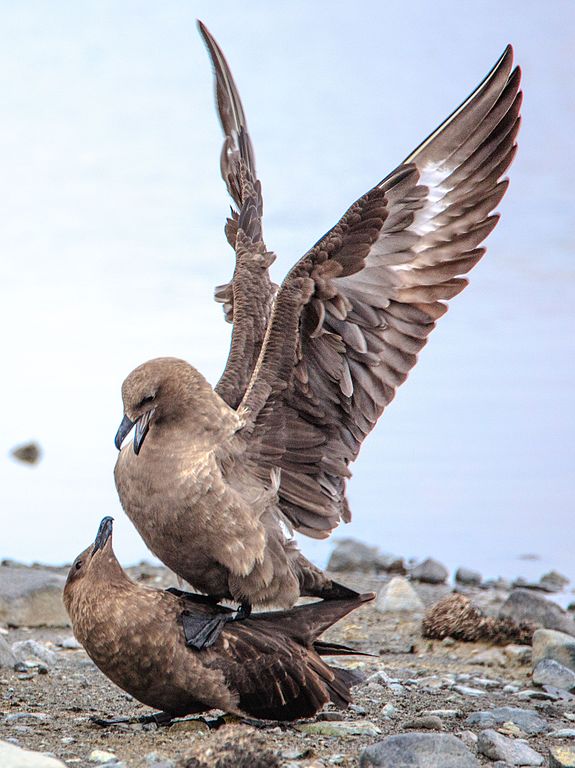Brown Skua
The brown skua (Stercorarius antarcticus), also known as the Antarctic skua, or subantarctic skua, is a large seabird that breeds in the subantarctic and Antarctic zones and moves further north when not breeding.
Its taxonomy is highly complex and a matter of dispute, with some splitting it into two or three species: Falkland skua (S. antarcticus), Tristan skua (S. hamiltoni), and subantarctic skua (S. lönnbergi). To further confuse, it hybridizes with both the south polar skua and Chilean skua, and the entire group has been considered to be a subspecies of the great skua, a species otherwise restricted to the Northern Hemisphere.
Diet
Brown skuas are masters of piracy, they often feed by stealing partially digested fish from the the beaks of other birds. Their victims are typically terns or penguins, though other fish-eating species are also pursued until they disgorge their catches. The fact that skuas are swift and agile fliers (and that they sometimes gang up on a single victim) aid in their success rate.
In addition to fish, skuas also eat other birds, small mammals, eggs and carrion. They are the primary predators of the eggs of the Antarctic tern.
Description
This is the heaviest species of skua and rivals even the largest gulls as the heaviest species in the shorebird order although not as large in length or wingspan. It is 52–64 cm (20–25 in) in length, 126–160 cm (50–63 in) in wingspan and has a body mass of 1.2–2.18 kg (2.6–4.8 lb).
A study in 2016 reported that brown skuas can identify individual human beings, possibly indicating high cognitive abilities.
